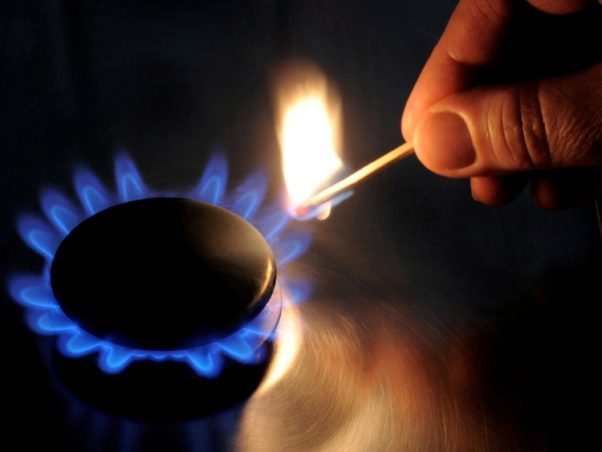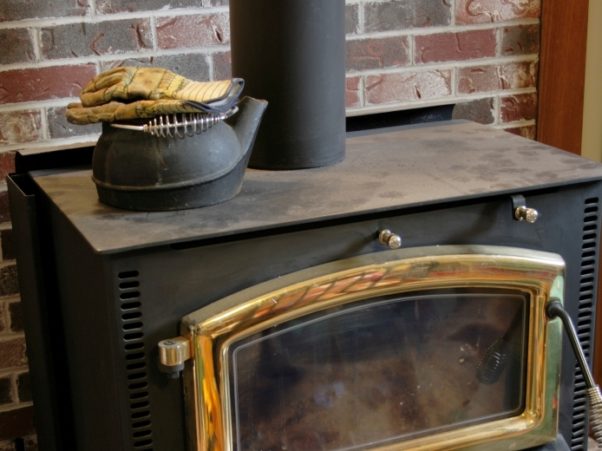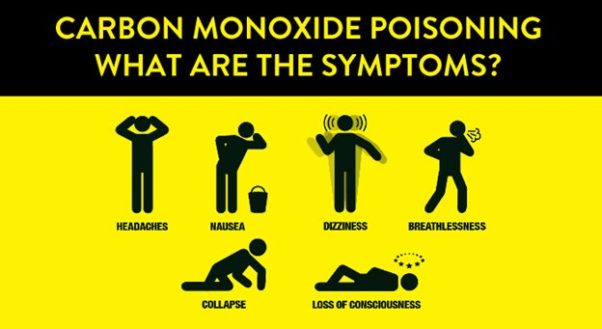Prevent Carbon Monoxide Poisoning
On Jan. 4, a 13-year-old girl died and dozens of people were injured by carbon monoxide poisoning in Perth Amboy, N.J. Locally, nine people were hospitalized for carbon monoxide exposure in mid-November when a three-story boardinghouse in the 500 block of U Street NW filled with the gas due to a faulty furnace. Just days earlier, a six-story apartment building in northwest was evacuated due to high levels of carbon monoxide.

Stoves should not be used to heat your home and gas appliances should have adequate ventilation.
(Photo: National Capitol Poison Center)
When major winter storms hit like the recent freeze that we experienced in the DMV, it is common to see an uptick in poisoning exposures/injuries. “Severe weather often results in illness and deaths from hypothermia and carbon monoxide (CO) poisoning, as well as exposures to a variety of substances,” according to Dr. Diane Calello, NJ Poison Control Center executive and medical director at Rutgers Medical School’s Department of Emergency Medicine. Carbon monoxide is known as the “silent killer” for a reason. It is a gas that gives no warning – you cannot see it, smell it or taste it. The good news: These exposures are preventable.
“Rest assured that the state’s poison control center will be here to respond to your calls for help, 24/7,” says Calello. You can reach the National Capitol Poison Center by calling 800-222-1222.
Reduce your risk of CO exposure/poisoning:
- Only use generators outside. Keep them more than 20 feet from both you and your neighbor’s home, doors or windows. Carbon monoxide gas can blow back into a building if too close.
- Clear snow from all heating and dryer vents.
- Gas appliances must have adequate ventilation. If need be, keep a window slightly cracked to allow airflow.
- Open flues when fireplaces are in use.
- Never use the stove to heat your home/apartment.
- Do not bring generators, pressure washers, grills, camp stoves or other gasoline, propane, natural gas or charcoal-burning devices inside your home, basement, garage, carport, camper, boat cabin or tent – or even outside near an open window or door.
- DO NOT cook with charcoal indoors.
- DO NOT idle a car in a closed garage. Once you pull in, immediately turn off the engine.
- Do not idle a car in a snowbank. If stuck in the snow, make sure to clear the tailpipe and surrounding area to prevent exhaust fumes from entering the car.
- If you do not have any carbon monoxide detectors, install them right away. If your detectors are old and/or not working properly, replace them right away. Check the batteries and replace if needed.

Make sure flues on wood-burning stoves or fireplaces are open when in use. (Photo: National Capitol Poison Center)
If you suspect carbon monoxide poisoning, take immediate action:
- If someone is unconscious or unresponsive, get him or her out of the house and call 9-1-1 immediately.
- Exit the house/building immediately. Do not waste time opening windows. This will delay your escape and cause you to breathe in even more dangerous fumes.
- Contact your local fire department/energy provider.
- Call the Poison Control Center at 800-222-1222 for immediate treatment advice. Do not waste time looking for information on the internet about carbon monoxide poisoning. Call for fast, free and accurate information.
General safety tips:
- Save the Poison Help line (800-222-1222) in your cell phone and post it somewhere visible in your home.
- Stay home and off the roads if possible. Driving conditions in severe weather deteriorate quickly.
- Have a flashlight with new batteries ready to use.
- Make sure to use a flashlight when giving or taking medication. Read all labels carefully.
- Have a battery-operated radio available with new batteries.
- Rock salt exposures occur frequently during severe weather. Children and pets can easily access rock salt left in garages, outside, hallways, etc. Keep these products locked up and out of sight and reach.
- Avoid drinking alcohol in cold temperatures.
- Infants, children, and the elderly are at greatest risk for hypothermia. Stay warm and dress appropriately.
- Some medications may increase your risk for hypothermia. Check with your doctor, pharmacist or call the Poison Control Center.
Carbon monoxide poisoning is serious and should be handled as a medical emergency. Don’t waste valuable time looking up information on the Internet when every minute counts. Know the symptoms and get help immediately if you suspect someone was exposed to carbon monoxide. Call the Poison Control Center unless the person is unconscious, not breathing, hard to wake up or seizing, then call 9-1-1. Poison control centers are a great resource for information and emergencies. Keep the number at your fingertips. Save the Poison Help number (800-222-1222) as a contact in your cell phone.
Rutgers University contributed to this report.

Editor-in-Chief Mark Heckathorn is a journalist, movie buff and foodie. He oversees DC on Heels editorial operations as well as strategic planning and staff development. Reach him with story ideas or suggestions at dcoheditor (at) gmail (dot) com.




